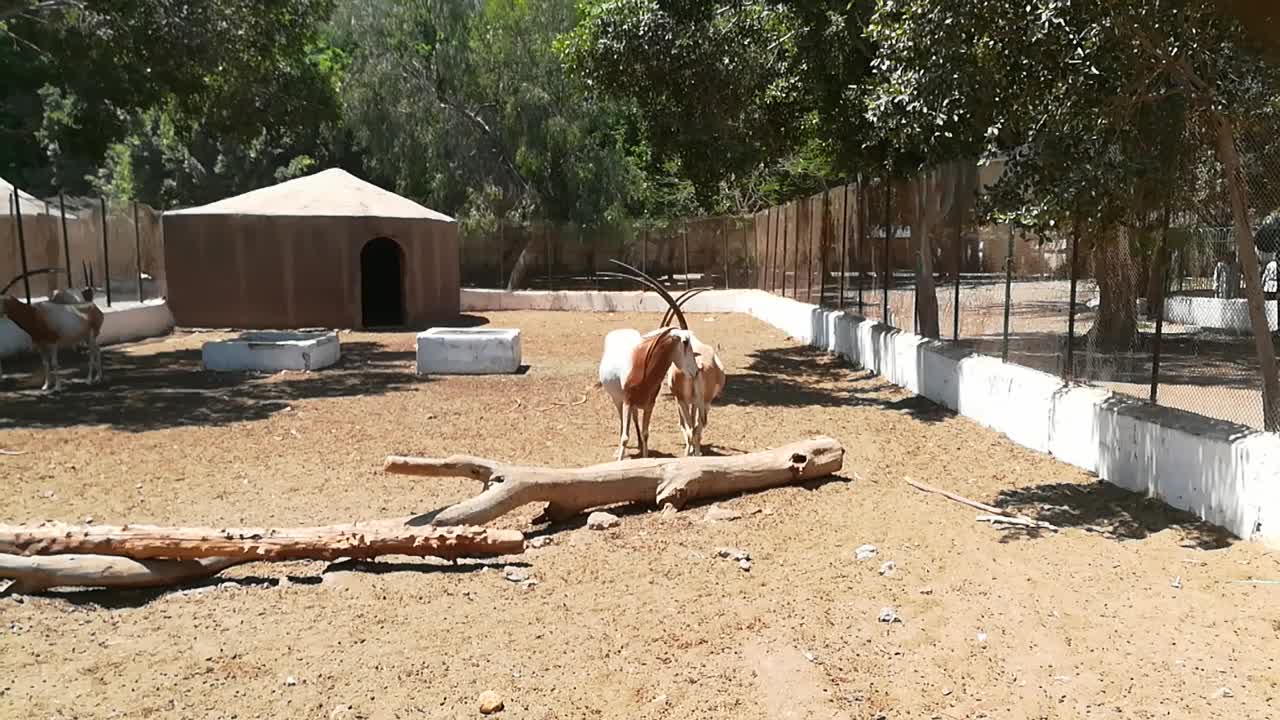Premium Only Content

Arrival Of Couple Scimitar Horned Oryx
Arrival Of Couple Scimitar Horned Oryx , Oryx are mostly white with reddish brown necks and marks on the face and a long, dark, tufted tail. The white coat helps reflect the heat of the desert.
Their black skin and tip of the tongue protects against sunburn while enlarged hooves enable the oryx to walk easily on sand. Dense eyelashes and strong eyelids protect against windblown sand.
Both male and female scimitar-horned oryx have long, ridged, sharp-tipped and curved backwards horns that grow to be several feet long.
Scimitar-horned oryx have an interesting way of coping with a shortage of water. They are able to tolerate a rise in body temperature by several degrees.
Being able to tolerate an internal body temperature of 116 degrees Fahrenheit means oryx do not need to sweat as much, which in turn conserves water.
This adaptive hyperthermia allows them to rid themselves of excess heat at night when their body temperatures can drop below normal.
In addition to this physiological adaptation to hot and arid environments, they can go for long periods without drinking water. They dissipate heat through their appendages.
Scimitar-horned oryx eat grasses, herbs, juicy roots, and buds. Acacia seedpods provide important nutrients for mothers with young calves. Wild melon and the twigs and shoots of Capparis are vital sources of moisture.
Feeding at night allows oryx to take advantage of higher water content in their forage. They produce very dry fecal pellets and highly concentrated urine.
-
 1:01:23
1:01:23
FamilyFriendlyGaming
16 hours ago $3.23 earnedCat Quest III Episode 14
23.5K -
 3:16:59
3:16:59
RG_GerkClan
5 hours ago🔴LIVE - Dominating One Raid at a Time - Escape From Tarkov - Gerk Clan
22K1 -
 1:49:43
1:49:43
Game On!
14 hours ago $1.95 earnedNFL Experts Top 10 Super Bowl Props!
19.2K2 -
 28:31
28:31
SB Mowing
1 day agoSiblings FEUD went so far the grass grew TALLER THAN THE HOUSE
72.1K11 -
 26:32
26:32
Stephen Gardner
16 hours ago🔥Tulsi Gabbard DROPS BOMBSHELL Obama Secret during hearing!
75.7K121 -
 4:42
4:42
SeasonofMist
5 months ago $0.06 earnedSYLVAINE - Dagsens Auga Sloknar Ut (Official Music Video)
1.76K -
 31:54
31:54
Jamie Kennedy
10 hours agoThe "Tolerant Left" is Getting Exposed
1.66K2 -
 1:00:39
1:00:39
Weberz Way
17 hours agoDEI NEEDS TO DIE, ANOTHER PLANE CRASH, & MAJOR TARIFFS BEING IMPOSED
1.01K1 -
 14:15
14:15
Ethical Preparedness
18 hours agoSecret Apocalyptic Pain Killing Weed that Big Pharma Tries to Hide from You -Post Collapse Medicine
8663 -
 16:13
16:13
Neil McCoy-Ward
1 day agoWhat We're Not Being Told About The DC Plane Crash Tragedy
40.1K36